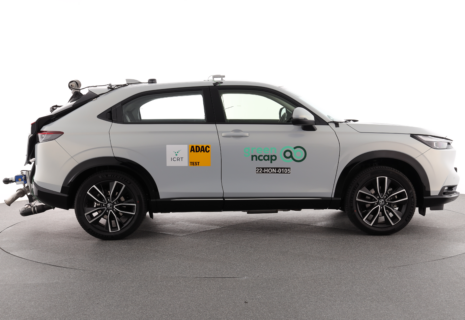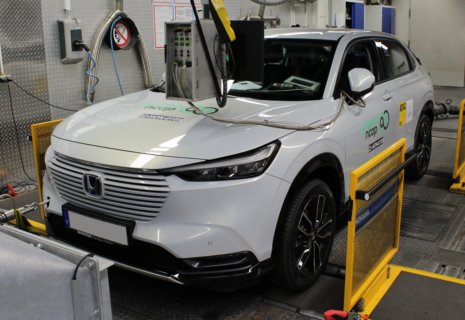Honda HR-V 1.5 i-MMD hybrid FWD cvt
2022
52%
7.5
10
Clean Air Index
4.9
10
Energy Efficiency Index
3.4
10
Greenhouse Gas Index
| Laboratory Tests | NMHC | NOX | NH3 | CO | PN | |
|---|---|---|---|---|---|---|
| 7.710 | Cold Test | |||||
| 8.010 | Warm Test | |||||
| 7.010 | Highway | |||||
| Cold Ambient Test | Does not qualify for additional robustness testing | |||||
| Road Test | ||||||
| 7.810 | On-Road Drive | |||||
| 3.65 | On-Road Short Trip | |||||
| On-Road Heavy Load | Does not qualify for additional robustness testing | |||||
| On-Road Light Load | Does not qualify for additional robustness testing | |||||
| Congestion | Does not qualify for additional robustness testing | |||||
| Laboratory Tests | Energy | |||
|---|---|---|---|---|
| 5.910 | Cold Test | |||
| 6.610 | Warm Test | |||
| 2.410 | Highway | |||
| Cold Ambient Test | Does not qualify for additional robustness testing | |||
| Consumption | Driving Range | |||
| Average | 6.4l100 km | 658km | ||
| Worst-Case | 8.5l100 km | 471km | ||
| Greenhouse Gases | CO2 | N2O | CH4 | |
|---|---|---|---|---|
| 4.710 | Cold Test | |||
| 5.610 | Warm Test | |||
| 0.010 | Highway | |||
| Cold Ambient Test | Does not qualify for additional robustness testing | |||
Specifications
- Tested Car JHMRV5830NS20XXXX
- Publication Date 07 2022
- Vehicle Class Small SUV
- Emissions Class Euro 6d AP
- Tyres 225/50 R18
- Mass 1,390 kg
- Engine Size 1,498 cc
- Power/Torque 96 kW/253 Nm
- Declared CO2 122 g/km
- Declared Battery Capacity 0.90 kWh
- Declared Consumption 5.4 l/100 km




































































































































Our verdict
August 2023: The result of this car been updated. Previously reported Ammonia (NH3) values were incorrect owing to a technical error with the equipment at the test laboratory and a correction has been applied.
Tested here is the new Honda HR-V with a 1.5 i-MMD hybrid powertrain and gasoline particulate filter. The vehicle demonstrates impressive Clean Air Performance and sound consumption figures in the moderate vehicle speed ranges. Highway driving increases the petrol consumption significantly – a behavior typical of SUVs. The higher the fuel demand, the worse the greenhouse gas emissions and this is where the Honda HR-V scores poorly. Additional improvements in the particle filtering efficiency and of the fuel consumption at higher speeds would help to boost the score. Overall, the HR-V's total score benefits from the Clean Air Index performance and reaches a weighted Overall Index of 5.2/10 or 3 Green Stars, a respectable result for a petrol hybrid SUV.